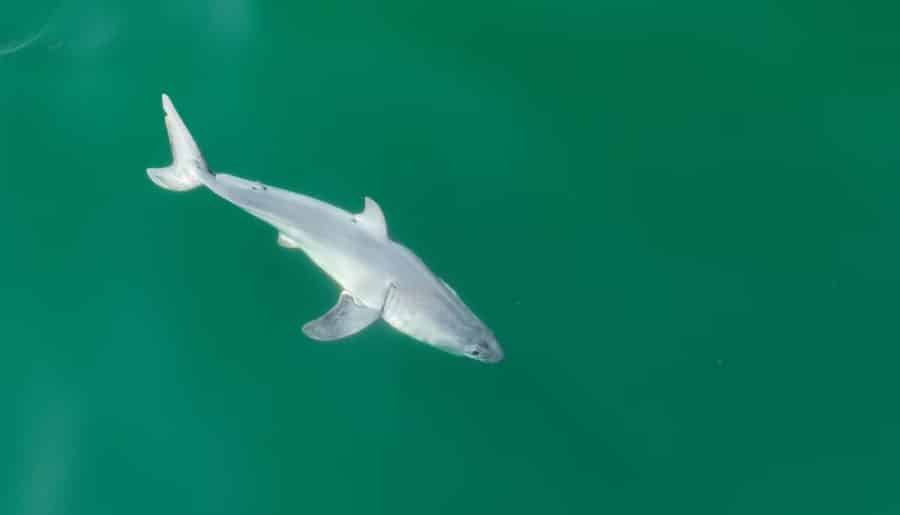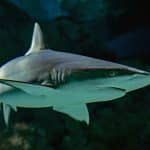Would you believe me if I told you that until recently, no one had ever seen a newborn baby shark alive in the wild?
Believe it or not, no one had been able to identify where they were born before. Humans have only seen adult great whites; newborns were always a mystery.
But on July 9, 2023, wildlife filmmaker Carlos Gauna and biology doctoral student Phillip Sternes from the University of California, Riverside, witnessed an astonishing sight for the first time.
A newborn great white shark may have been seen in the waters near Santa Barbara on California’s central coast. A drone camera captured footage of it swimming, making it the first newborn great white shark ever observed in recorded history.
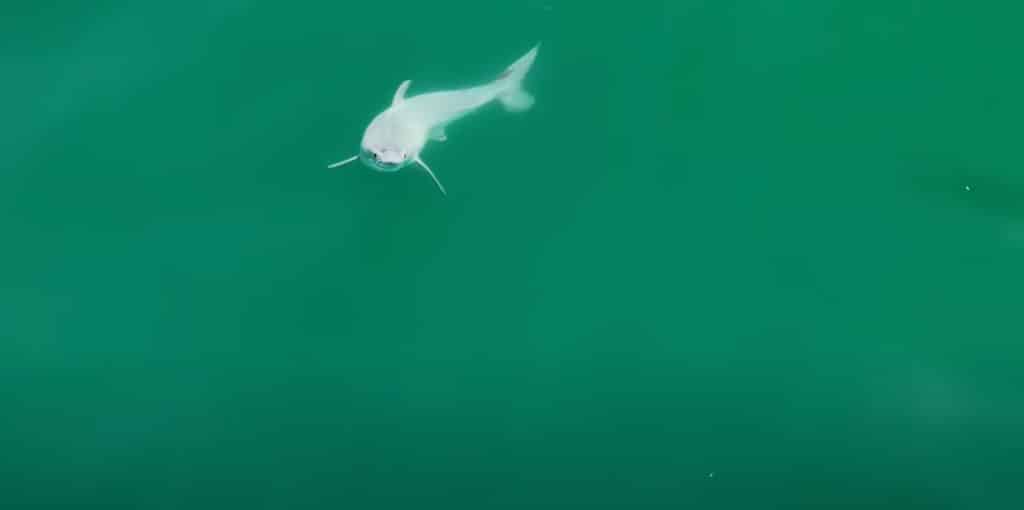
Gauna and Sternes documented their findings in an article published in the journal Environmental Biology of Fishes.
The researchers captured drone images of the pup (what a baby shark is called), which appeared to be a 5-foot-long pure-white shark. This is quite unusual as sharks are typically white on the bottom and gray on top.
On closer inspection, the researchers noticed the pup was shedding a white film from its body while swimming.
But why was the pup pure white?
According to the researchers, the reason behind the white coloration of baby sharks may be the production of a milky fluid called “intrauterine milk.”
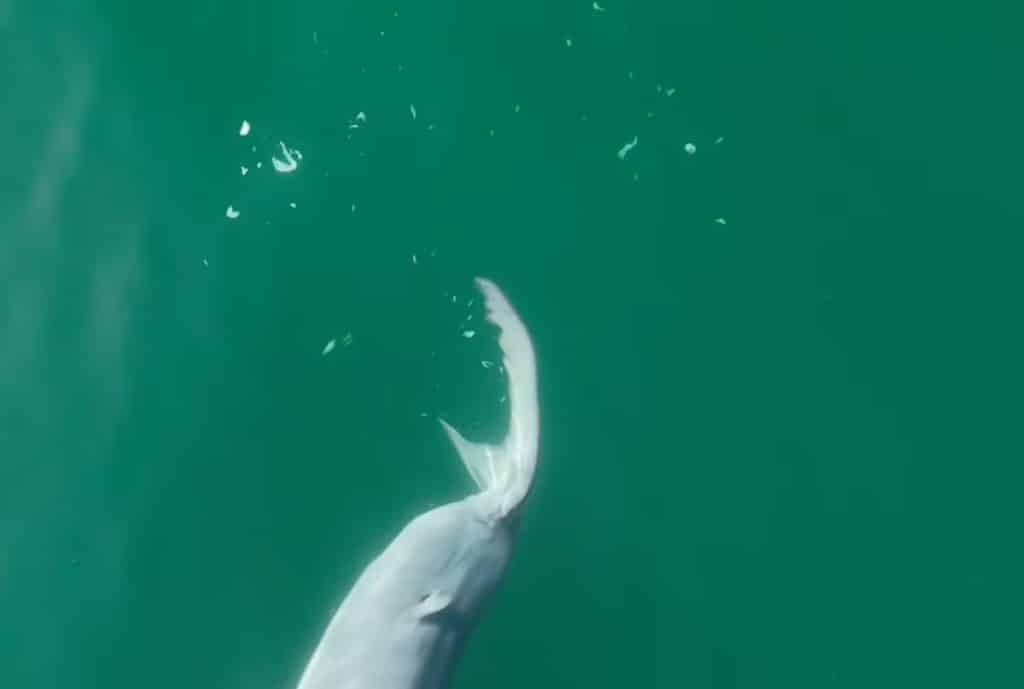
This uterine milk is produced by the pregnant female shark as additional nourishment for the growing shark pups in the uterus during pregnancy, and the embryos then consume it.
The researchers think the pup they documented was only hours or possibly one day old. They suspected that the white film being shed by the baby great white shark was possibly its embryonic layer.
As you know, when a great white shark and its siblings are born, they tend to swim away from their mother.
At birth, these baby sharks are already about 5 feet (1.5 meters) long, and their length can grow up to four times over time.
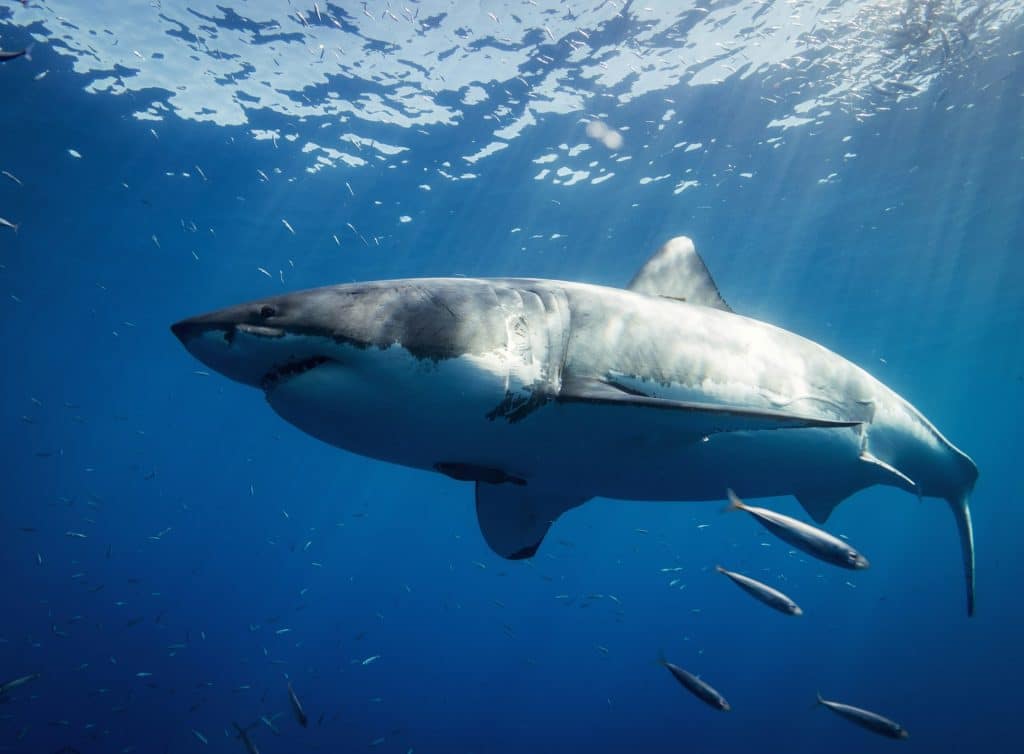
However, despite several signs suggesting the sighted shark is a newborn, some are not fully convinced.
Some believe the researchers’ findings are still speculative and need further investigation. It’s possible that the shark’s unique white skin coloration could be due to an unknown skin condition rather than its age.
Gauna and Sternes acknowledge the possibility that the thin white layer covering the shark could be due to a skin condition. However, they have also given several pieces of evidence to validate their discovery.
One such argument is that Gauna had previously filmed three pregnant great white sharks in the same area in the past years and in the weeks before the sighting. It’s possible that the baby shark was born from one of those sighted sharks.
They also stated that the animal they spotted was similar in size to newborn sharks, and its physical features resembled those of near-term embryos.
However, if the white coloration is truly due to a skin condition, they agree this discovery is still amazing.
“If that is what we saw, then that too is monumental because no such condition has ever been reported for these sharks,” Gauna said.
According to Sternes, additional research is required to verify if these waters are actually a breeding ground for great white sharks.
Further studies could help scientists solve the mystery of the species’s birthing place. Knowing where great white babies are born could help protect them, as great whites are considered vulnerable to extinction.
